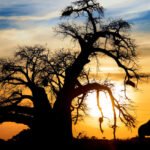Introduction
Climbing Mount Kilimanjaro is a dream adventure for many travelers seeking to experience Africa’s highest peak and the Roof of Africa. Whether you’re drawn by the challenge, the stunning scenery, or the desire to conquer Uhuru Peak, this guide will provide you with all the essential information to prepare for your Kilimanjaro climb. From safety tips to what to pack and choosing the best route, we’ve got you covered.
Why Climb Kilimanjaro?
Mount Kilimanjaro, located in Tanzania, offers a unique opportunity to trek through diverse ecosystems and experience breathtaking views without the need for technical climbing skills. It’s one of the most accessible high-altitude climbs in the world and a bucket-list adventure for many.
Choosing the Best Time to Climb
The best time for a safari in Tanzania and to climb Kilimanjaro is during the dry seasons, which run from January to March and from June to October. These months provide the most stable weather conditions, reducing the chances of rain and increasing your chances of a successful summit.
Choosing Your Route
Kilimanjaro has several routes to the summit, each offering a different experience:
- Marangu Route: Known as the “Coca-Cola Route,” it’s the only one with hut accommodations and is considered the easiest.
- Machame Route: Often called the “Whiskey Route,” it’s more challenging but offers better acclimatization and stunning views.
- Lemosho Route: A longer and less crowded route with beautiful scenery and excellent acclimatization opportunities.
- Umbwe Route: The shortest and most strenuous route, recommended for experienced climbers.
- Rongai Route: Approaches from the north and is less frequented, providing a unique perspective of the mountain.
Preparing for Your Climb
1. Physical Preparation: Ensure you’re physically fit for the climb. Regular hiking, cardio exercises, and strength training will help prepare your body for the challenges ahead.
2. Safety Tips:
- Acclimatization: To avoid altitude sickness, it’s crucial to acclimatize properly. Choose a route with a longer trek to allow your body to adjust.
- Hydration: Drink plenty of water to stay hydrated. Dehydration can exacerbate altitude sickness.
- Weather Conditions: Be prepared for varying weather conditions, including extreme cold and rain.
3. Choosing a Tour Operator: Select a reputable Kenya Tanzania safari tour operator who offers comprehensive services, including safety measures, experienced guides, and quality equipment. Look for companies with positive reviews and strong safety records.
What to Pack for Kilimanjaro
1. Clothing:
- Base Layers: Moisture-wicking base layers to keep sweat away from your skin.
- Insulating Layers: Fleece or down jackets for warmth at higher altitudes.
- Waterproof Gear: A waterproof jacket and pants to protect against rain.
- Hiking Boots: Sturdy, comfortable, and broken-in boots are essential for the trek.
- Accessories: Gloves, a warm hat, and sun protection like sunglasses and a hat.
2. Gear and Equipment:
- Sleeping Bag: A high-quality sleeping bag rated for sub-zero temperatures.
- Backpack: A comfortable daypack for carrying personal items and essentials.
- Trekking Poles: Helpful for reducing strain on your knees and providing stability.
3. Miscellaneous Items:
- First Aid Kit: Include altitude sickness medication, blister treatments, and general first aid supplies.
- Hydration System: A hydration bladder or water bottles to keep water accessible.
- Camera and Binoculars: Capture the stunning scenery and wildlife.
During Your Climb
1. Daily Routine: Expect to walk between 4-7 hours each day. Start your day with a hearty breakfast and enjoy lunch and dinner provided by your guides. Maintain a steady pace to conserve energy and aid acclimatization.
2. Summit Day: Summit day is the most challenging part of the climb, starting in the early hours of the morning. Dress in all your warm layers, and take your time to reach the summit. The reward is an unforgettable sunrise and the achievement of standing on Uhuru Peak.
Post-Climb Tips
- Celebrate Your Achievement: Enjoy your time in Tanzania after the climb. Consider a Tanzania safari Serengeti to witness the incredible wildlife or relax on the beaches of Zanzibar.
- Recovery: Give yourself time to recover from the climb. Rest and hydrate to help your body return to normal.
Conclusion
Climbing Mount Kilimanjaro is a remarkable adventure that requires thorough preparation and the right mindset. With the right gear, a reputable tour operator, and proper acclimatization, you can successfully conquer this iconic peak and create memories that will last a lifetime. For more information or to book your adventure, contact us at Explore Expedition Safari







